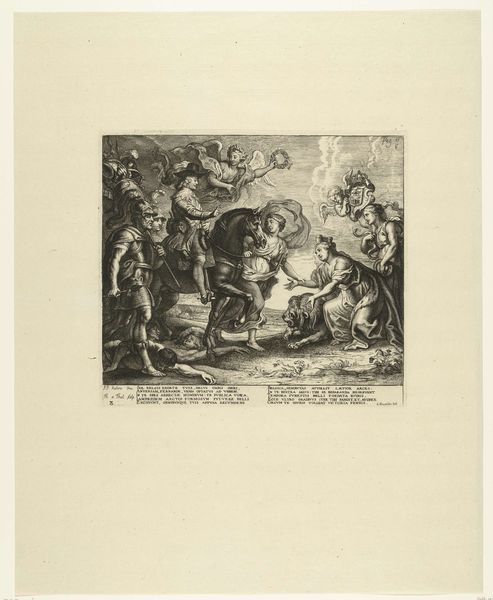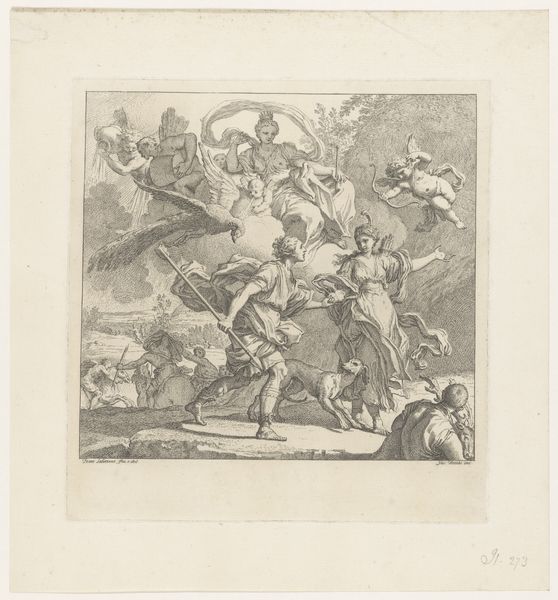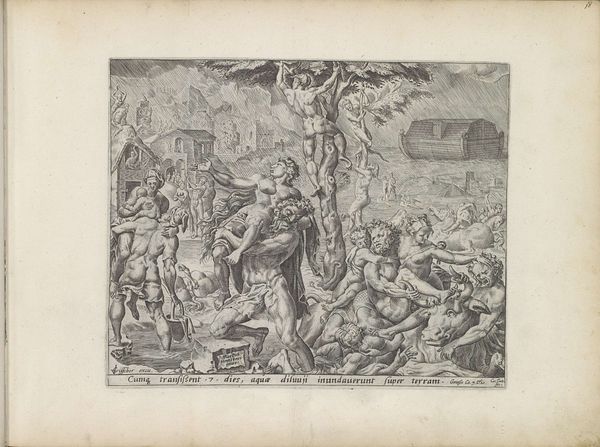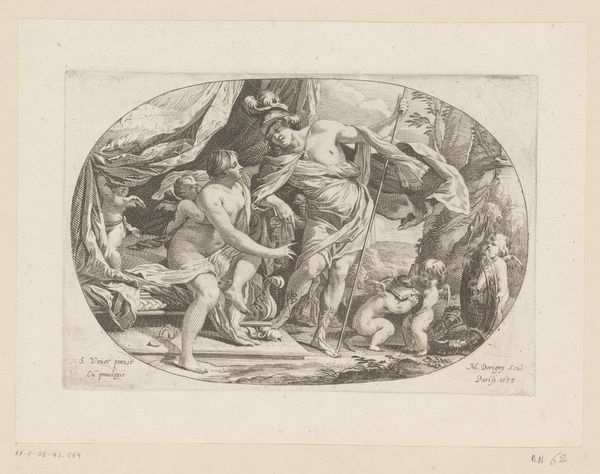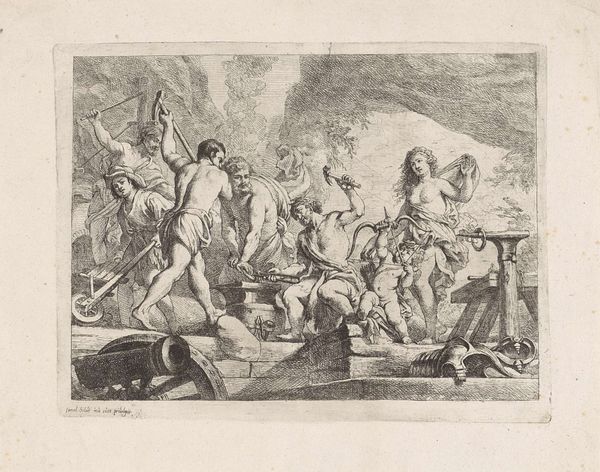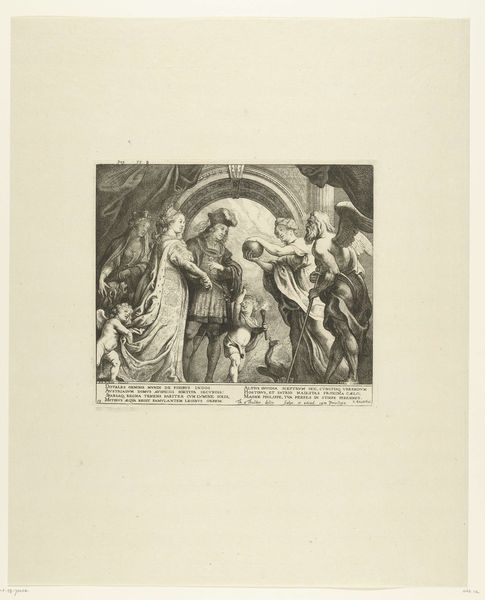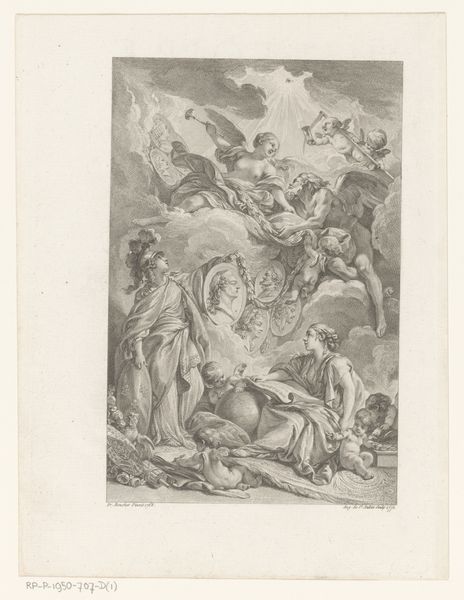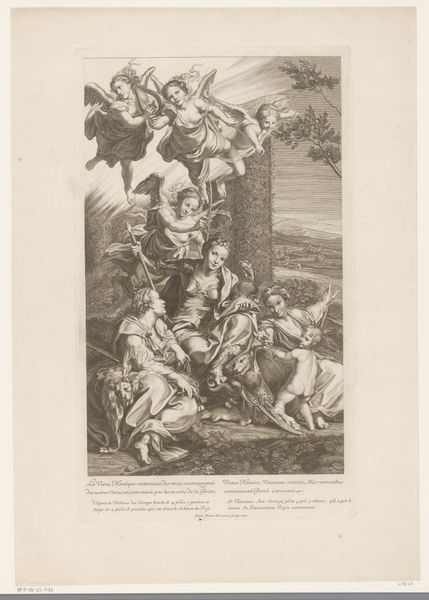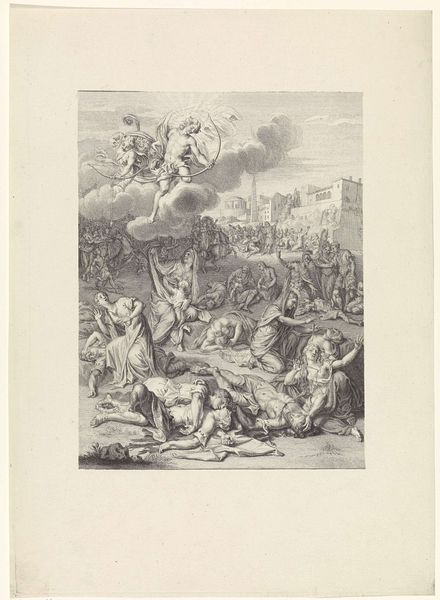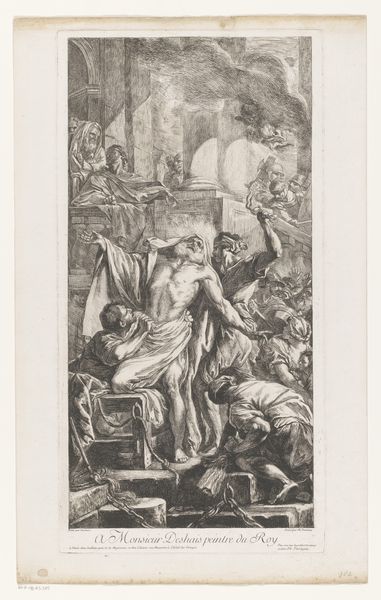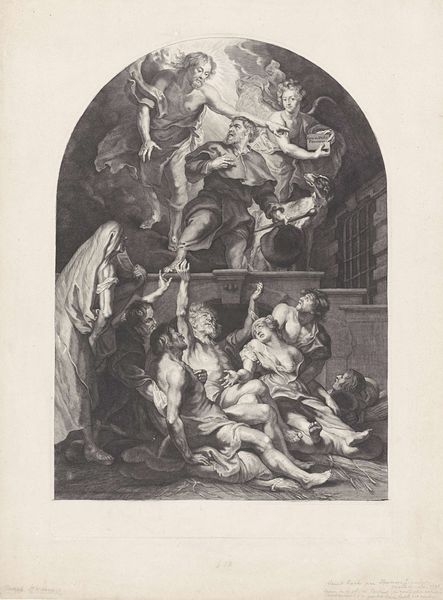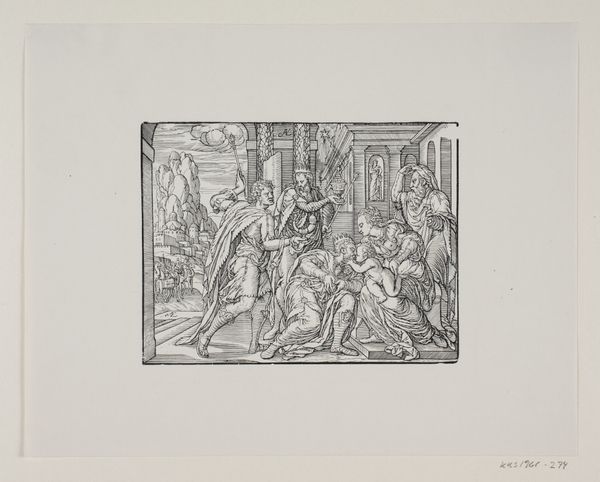
De ontmoeting van de twee Ferdinands te Nördlingen; intocht van Ferdinand te Antwerpen in 1635 (nr. 9) 1639 - 1641
0:00
0:00
print, etching
#
ink drawing
#
narrative-art
#
baroque
#
pen drawing
# print
#
etching
#
figuration
#
history-painting
Dimensions: height 280 mm, width 342 mm
Copyright: Rijks Museum: Open Domain
Editor: This is "The Meeting of the Two Ferdinands at Nördlingen; Entrance of Ferdinand in Antwerp in 1635 (nr. 9)," an etching and engraving by Theodoor van Thulden made between 1639 and 1641. It's striking how he captures so much dynamism with simple lines! What exactly am I looking at here, in terms of historical context? Curator: That's an insightful observation about the dynamism. The print depicts a significant political event, the meeting of two powerful figures, likely Ferdinand II and another member of nobility, during a turbulent period in European history. We must consider this within the context of the Thirty Years' War and the intricate power dynamics of the Habsburg Empire. Editor: So it's not just a picture of two guys shaking hands. Curator: Exactly. It's a highly staged representation meant to convey power and legitimacy. Notice the figures in the foreground: What roles do you think those characters play, considering the historical moment? Editor: They seem almost allegorical, perhaps representing the bounty and prosperity Ferdinand is bringing? I’m struck by the stark contrast between them and the fully armed men in the background, who seem prepared for conflict. Curator: Precisely. It speaks to the duality of power during this era - the need for both strength and perceived benevolence to maintain control. Also, consider the medium itself, etching and engraving, allows for the wide dissemination of this message. The artist clearly intended it to serve as political propaganda, not just a neutral record of an event. Editor: So, every element – from the figures to the medium – is strategically chosen to reinforce the Habsburg narrative. Did van Thulden always create works like this, designed to assert political power? Curator: While he created other pieces, many served similar purposes in solidifying power and prestige during a time of significant conflict and societal transition. Understanding works such as this can give insight into how powerful families maintained control of their narratives. Editor: It's amazing how much information is embedded within what initially seems like a simple historical depiction. Thanks for providing a key to unlock all those layers! Curator: My pleasure. Examining art through a contextual lens is crucial for understanding the complex ways power, identity, and history intertwine.
Comments
No comments
Be the first to comment and join the conversation on the ultimate creative platform.
